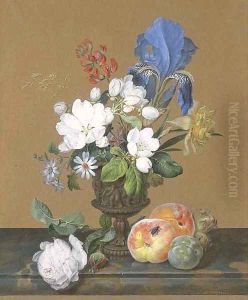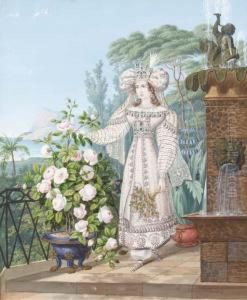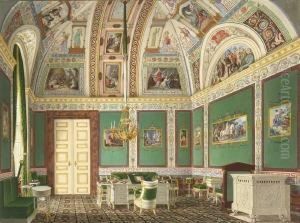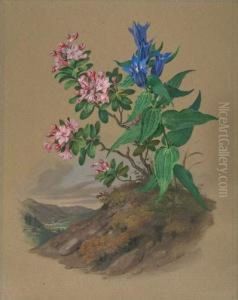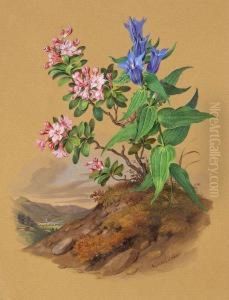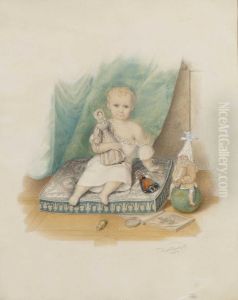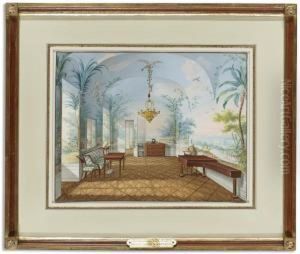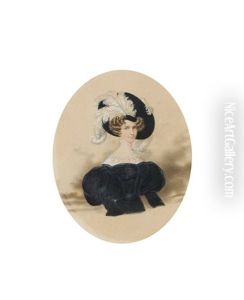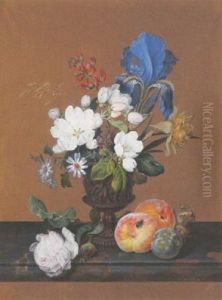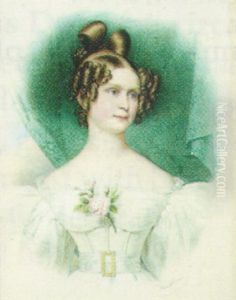Franz Xaver Nachtmann Paintings
Franz Xaver Nachtmann was a notable German painter and lithographer, born in 1799 in the town of Zwiesel, located in the Bavarian Forest, Germany. His artistic journey began under the guidance of his father, who was a glass painter, a craft prevalent in their home region known for its glassmaking industry. This early exposure to art and craftmanship undoubtedly influenced Nachtmann's development as an artist. He furthered his education at the Academy of Fine Arts Munich, where he honed his skills and delved into the realms of painting and lithography, mediums that were gaining popularity at the time.
Nachtmann's work is characterized by its detailed portrayal of religious and historical subjects, a common theme among artists of his era. He was particularly noted for his skill in lithography, a printing process that allows for the creation of images by drawing on limestone with oil, fat, or wax, and then using that stone to print multiple copies of the image. This technique was crucial in the dissemination of art and knowledge during the 19th century, making Nachtmann's contributions significant in the spread of visual culture.
Throughout his career, Nachtmann received several commissions for altarpieces and religious paintings, showcasing his ability to convey spiritual and historical narratives with depth and sensitivity. His works are distinguished by their meticulous attention to detail and vibrant use of color, qualities that made him well-respected among his contemporaries. Despite his relatively short life, Nachtmann left a lasting impact on the German art scene of the 19th century.
Franz Xaver Nachtmann passed away in 1846 in Munich, but his legacy lives on through his contributions to art and lithography. His works continue to be studied and appreciated for their technical skill and historical significance, marking him as an important figure in the German Romantic movement. Though not as widely known as some of his contemporaries, Nachtmann's artistic achievements provide valuable insight into the cultural and artistic practices of his time.
